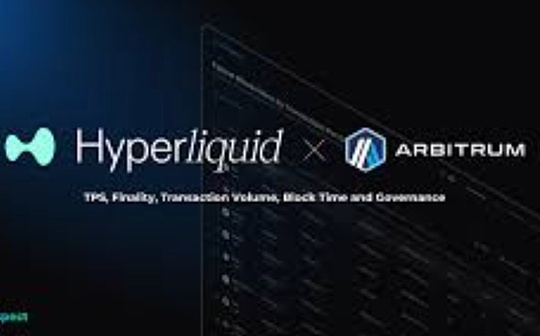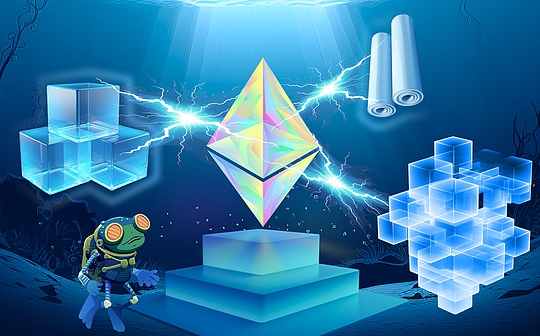
The innovative application of liquid Re-Staking Token, and the development of the recently launched Blast, which supports Layer2 automatic pledge function, is leading the new wave in the field of Defi pledge.This Bing Ventures article will focus on the background behind this dynamic, which is of the significance of the field of DEFI pledge, as well as the current main trends and prospects of this field.
Liquidity reinsurance agreement: the latest innovation in the LSD field
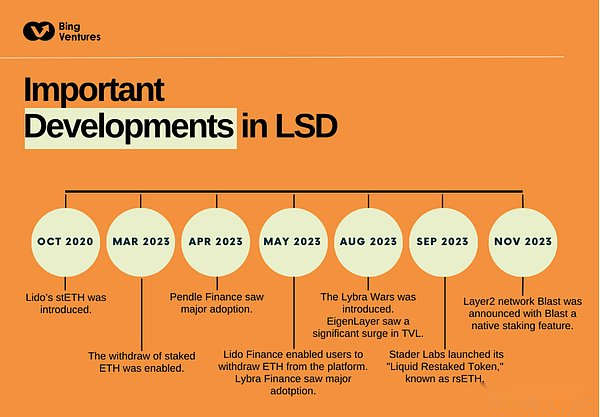
In the Ethereum ecosystem, especially after the upgrade in Shanghai, the development of the LIquid Staking Derivatives has shown full innovation and adaptation.Initially in Lido, a key role in the Ethereum pledge mechanism.By providing pledge solutions for Ethereum, Lido solves the major problem of liquidity locking.Their method allows users to pledge Ethereum while maintaining a certain liquidity, which is a major leap from the traditional and rigid pledge paradigm.
Subsequently, the addition of Pendle Finance brought a new change. Through the tokenization income, the user can make new gameplay to the LSD field through an interest rate -based protocol, which has opened a new new game for income optimization and risk managementway.
However, the market’s desire for higher returns and more effective use of pledged assets has not been fully satisfied.This has led to the development of a more complex mechanism, such as the re -pledge agreement Eigenlayer.Eigenlayer allows pledges to pledge their Ethereum again to enhance the security and reliability of other protocols.This not only improves the potential benefits of the pledgedness, but also contributes to the toughness and security of the entire Ethereum network.
But soon a challenge appeared, that is, the tokens locked in Eigenlayer lost liquidity and became unrealistic, so the diversity in the field of DEFI became limited.This has led to the innovation of liquidity re -pledges (LRT), which is a solution that unlocks the liquidity of these re -pledged assets and allows pledges to further improve their return by participating in DEFI.Users can deposit LRT into liquidity and re -pledges to obtain benefits.
Therefore, the LSD field has developed from the starting point of single -layer pledge to a more complex and multi -faceted ecosystem.The recent development, such as Blast, reflects this trend.Blast is EVM compatible Ethereum Two -layer network. It provides native ETH and stable currency pledge income on its chain. This further democratizes the acquisition of pledge rewards and makes the process more friendly and diversified.This evolution of LSD narrative emphasizes a dynamic and adaptive Ethereum ecosystem, continuously innovating to meet users’ demand for higher liquidity and returns, and at the same timenavigation.
Defi’s next narrative: LRT
>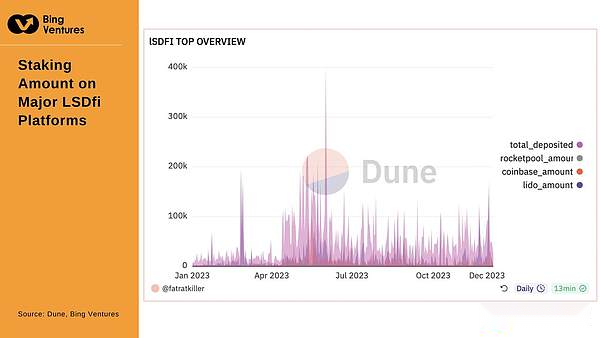
In the field of DEFI, the emergence of liquidity re -pledged tokens (LRT) is a profound innovation of the traditional pledge model.LRT not only broke the limitations of a single pledge in concept, but also promoted the popularization of multi -agreement pledge enhancement in practice.Through the EIGENLAYER platform, users can scattered their ETH resources on multiple active verification services (AVS) across the boundary of a single protocol.Safety level.
The advantages of LRT are many aspects: the significant improvement of capital efficiency, the enhancement of network security, and the huge savings of developers in the distribution of resources.However, at the same time, we should also be alert to the risks accompanied by: including potential fine risks, centralized agreement, and dilution of income caused by fierce market competition.
In the market prospects of LRT, we have seen the huge temptation of its high -yield potential.LRT provides additional income channels for ETH pledges, which not only includes basic pledge income, but also Eigenlayer’s rewards and potential tokens issuance.In addition, through incentive measures such as airdrops, LRT is expected to attract wider user participation, thereby promoting the overall growth of DEFI leverage. This trend is expected to replicate or even exceed the 2020 DEFI summer.
The future trend is remarkable.Driven by LRT, it is expected that the DEFI field will emerge in a competitive trend similar to “Curve War”, and token economics may evolve towards a more complicated Vetokenomics model.At the same time, the introduction of emerging AVS, through token rewards or the impact of token issuance decisions of the LRT protocol, can become a key driving force to attract ETH and pledge.
In summary, LRT has shown its unique value in unlocking liquidity, improving income, and optimizing governance and risk management.In this way, LRT is not only a pledge tool, but also a key factor in promoting DEFI innovation and growth.Its development and application will bring far -reaching changes to the DEFI ecosystem, and open a new possibility for users, developers and the entire blockchain world.
Risks and challenges accompanied by it
Stader Labs, as a dark horse in the industry, has recently launched a currently pledged token RSETH on the Ethereum main network.Through RSETH, users can pledge the existing migrants (such as CBETH of Coinbase, STETH of Lido, and RETH of Rocket Pool) for secondary pledge on multiple different networks. Based on this, new mobile token representatives representIts share in the re -pledge agreement has greatly improved the flexibility and liquidity of pledged assets.With the support of Eigenlayer, by simplifying the process of entering the re -pledge ecosystem, RSETH has realized the large -scale pledge of ETH, further strengthening the decentralized characteristics of the Ethereum network.
However, this innovative financial tool also brings many risks.The co -founders of Ethereum founder Vitalik Buterin and Eigenlayer have all pointed out that pledge may lead to complex scenes and threaten the security of the main network.In addition, with the emergence of more and more AVS and LRT, excessive dispersing industry funds and attention may lead to market instability and weakening the governance structure.
As the emerging force in the web3 ecosystem, Blast Layer2 public chain injects new vitality into the Layer 2 solution through its original automatic compound interest function.The innovation of BLAST is to provide basic benefits for the deposit on the Layer 2 network. Through cooperation with Lido and other agreements, it provides stable pledge returns. At the same time, it will invest stabilized currency assets into MakerDao and other agreements to achieve additional benefits.Although Blast’s operating model brings convenience and benefits to users, its tvl composition and strategy also reveals potential centralized risks and market sensitivity issues.
The future challenge of Blast is how its strategy affects the actual utilization of assets and the dynamic capital conversion in the ecosystem.BLAST’s TVL strategy needs to change from static capital preservation to dynamic capital appreciation to ensure network vitality and DAPP’s capital liquidity.In this way, we can truly realize the goal of promoting the growth of the blockchain network, rather than just as the storage medium of capital.
Overall, the emergence of Stader Labs RSETH and Blast Layer2 public chain marks the innovation and progress of the pledge model of the DEFI field.But while pursuing the maximum benefits, we must also be alert to the potential risks of these emerging models to ensure the security and healthy development of the Ethereum network.The future DEFI ecosystem will need to find a more stable and sustainable balance between innovation and risk management.
New gameplay of Ethereum pledge
We believe that a dynamic pledge strategy like LRT is far -reaching impact on the Ethereum pledge market.First of all, the automation and efficiency of the strategy have reduced the investment threshold and attracted more individual investors.Secondly, with the inflow of more funds, the market liquidity has increased significantly, which helps stabilize the entire DEFI ecosystem.In addition, the dynamic pledge strategy has promoted market innovation and development by providing diversified and customized investment options.However, the implementation of this strategy also faces technical challenges, especially to build an efficient and accurate algorithm model, as well as ensuring system security and resisting network attacks.
>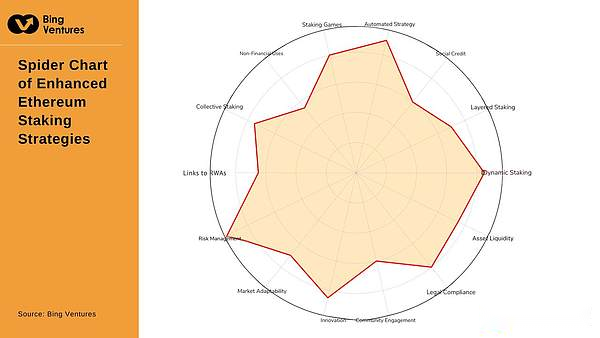
source: bing venntures
At the same time, the new paradigm of Ethereum pledge other than LRT is also exploring, and it is worthy of attention.
As a new model, Layed Staking System is in the context of mature market and diversification of investors.The system distributes pledged assets at different risk levels, and each level has different income potential and risk allocation.Low -risk levels provide relatively stable returns, suitable for risk aversion investors, while high -risk levels are suitable for investors with high risk tolerance.The flexibility of the system allows investors to allocate asset allocation based on their own risk preferences and market forecasts.The implementation of the layered pledge system requires complex smart contracts and fine risk management strategies to ensure the liquidity and security of assets at each level.The emergence of the stratified pledge system provides investors with more choices and flexibility, and promotes the Ethereum pledged market towards a more mature and diversified direction.
In addition, the automated pledge strategy based on smart contracts automatically executes pledge, lift pledge or re -assign pledged assets through smart contracts, which improves the efficiency and effect of asset management.The risk management capabilities of the automation pledge strategy are enhanced through the specific risk parameters set by smart contracts. Once the market conditions trigger these parameters, the smart contract will automatically adjust the pledge position.Although facing challenges, such as ensuring the security and reliability of smart contracts, it is expected that with the development of technology, the security of smart contracts will be strengthened, and the application of automated pledge strategies in a wider field.
Collective pledge and shared income model enable multiple investors to pledge their assets together and share the income generated by proportional sharing.This model automatically distributes the income through intelligent contracts to provide opportunities for small investors to cooperate with value.Intelligent contracts play a core role in the collective pledge mode, automatically execute income distribution to ensure that each participant obtains fair returns.Collective pledge provides opportunities to reduce risks and costs for small investors, and increases the tolerance of the DEFI ecosystem.
Finally, linking pledged assets to physical assets (RWA) is an innovative development in the field of DEFI.In this model, physical assets such as real estate and art can be used as the underlying assets of pledged assets, which are expressed on the blockchain through the tokenization and used for pledge.This provides liquidity for assets that usually do not have liquidity, and provide new sources of capital for the owner of physical assets.Although facing challenges, such as ensuring the accurate evaluation of physical assets and tokenization, and dealing with the supervision and compliance issues related to physical assets, the model of pledged assets and RWA will be widely used in the future.The holder provides new funding channels to provide new investment opportunities for cryptocurrency investors, and deepen the integration of the cryptocurrency market and the traditional financial market.
In short, after all in the field of DEFI pledge, after all, more innovation and development will be ushered in, which is worthy of investors and Defi players’ attention.

